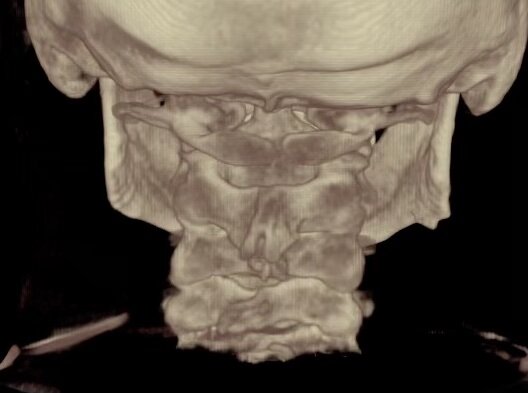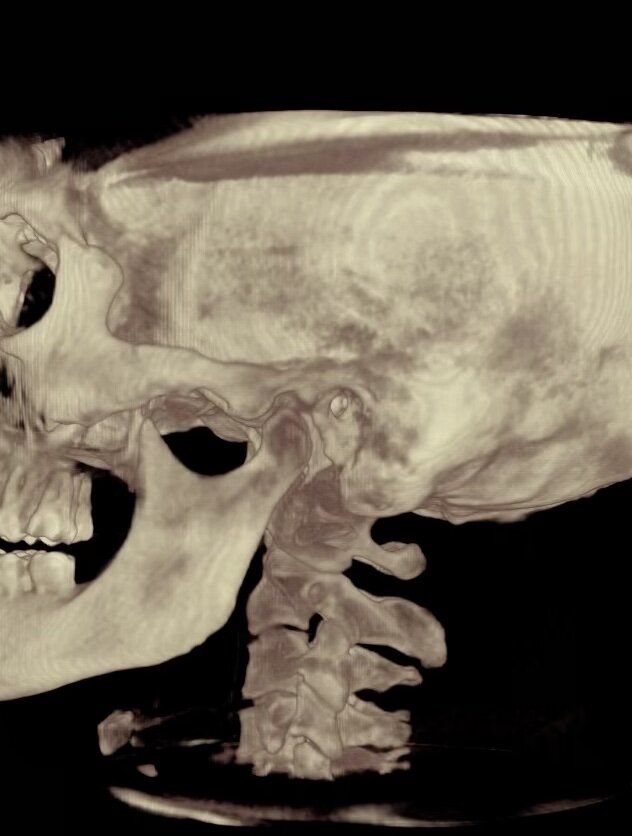What is Neck Pain?
Neck pain is an umbrella term for a collection of related symptoms that can be caused by a variety of conditions. It is typically characterized by pain in the neck, shoulders, and back that radiates into the head and down the arms.
Neck pain is one of the most common causes of discomfort in the United States, with 60-80% of adults experiencing the condition at some point in their lives.
Signs and Symptoms of Neck Pain
Unsurprisingly, the most common symptom of neck pain is pain, stiffness, discomfort, or tenderness in the neck. Depending on the underlying cause, these symptoms may be present at all times or only when the neck is in a particular position.
Long-term neck pain is often accompanied by a wide range of secondary symptoms, including headaches, insomnia, trouble concentrating, numbness or tingling, and dizziness.
How the Upper Cervical Spine Affects Neck Pain
The upper cervical spine is a group of seven vertebrae that support and sit below the base of the skull. Because of their position in the spinal column, the upper cervical vertebrae play a key role in stabilizing and supporting the muscles, ligaments, and nerves of the neck and shoulders. As a result, proper alignment of the upper cervical spine is essential for maintaining strength, flexibility, and range of motion in the neck, shoulders, and back.
When there is a misalignment in one or more vertebrae in the upper cervical spine, it can trigger a cascade of musculoskeletal problems, including pinched nerves, strained muscles, and poor posture. Without treating the root cause, these problems can eventually manifest as episodic or sustained neck pain.
How Our Upper Cervical Treatment for Neck Pain Works
Our treatment for neck pain is focused on identifying and targeting the underlying source of the condition using the Blair Upper Cervical Chiropractic Technique. By employing advanced diagnostic tools, Blair practitioners are able to restore misaligned upper cervical vertebrae to their natural position, alleviating neck pain symptoms and allowing the body's natural healing mechanisms to resume.
At Blair Chiropractic Clinic, our expert Blair chiropractor, Dr. Gordon Elder, has a two-step approach for treating neck pain. During your first appointment, Dr. Elder will perform a brief assessment of your spinal health to determine whether you are suffering from a vertebral misalignment in the upper cervical spine. Typically lasting 25-30 minutes, this assessment will enable Dr. Elder to give you recommendations on the best course of action for further treatment.
If a misalignment is detected, Dr. Elder will proceed to the second step of your treatment plan. To locate the precise location of the misalignment, Dr. Elder will use a range of 3-D imaging tools to scan the upper cervical spine and pinpoint the vertebral misalignment. You'll have an opportunity to review the findings of this process and ask Dr. Elder any questions you may have.
Finally, Dr. Elder will perform a series of gentle, low-force corrections to the primary area of concern. The goal of this step is to restore the natural alignment of the upper cervical spine, removing a painful source of pressure on the neck and kick-starting the body's natural healing processes.
Following the initial adjustment, patients will return for regular, gradually spaced-out check-ups to ensure their adjustment has stayed in place for 3 months. Over the course of 3-5 months, most patients average between 10 and 15 appointments with Dr. Elder.
If you’re suffering from neck pain, don’t suffer in silence. Located in Lubbock, Texas, Blair Chiropractic Clinic also services Lubbock, Amarillo, Midland, Odessa, Abilene, El Paso in Texas, and Hobbs in New Mexico.
Published by Vic Belonogoff: A Blair Chiropractic doctor helped heal vertigo, among other conditions that Vic Belonogoff suffered from, and it gave him his life back. He continues to see an upper cervical chiropractor as a preventative measure. Vic Belonogoff is passionate about upper cervical chiropractic and how much it helps patients.









